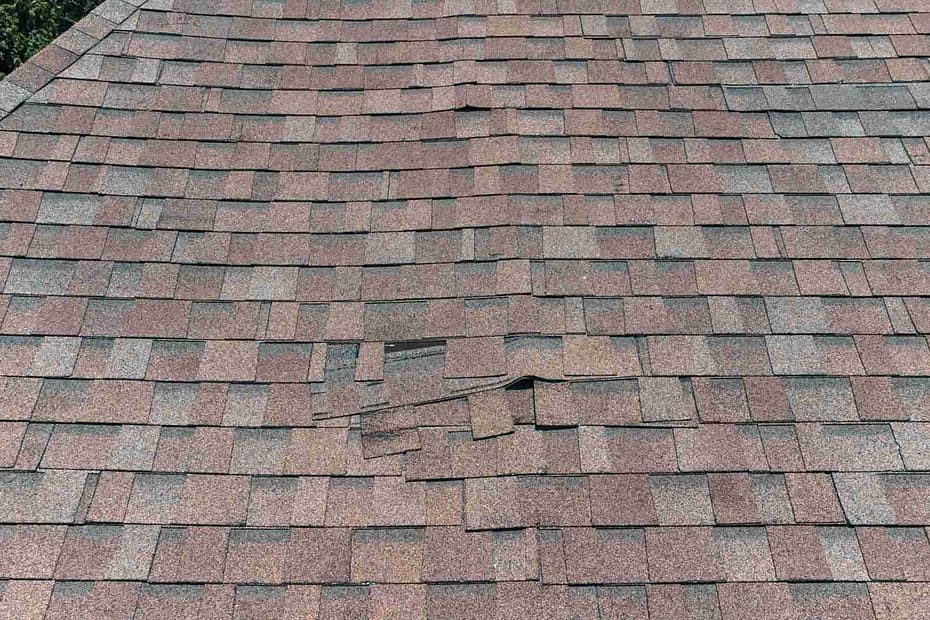A roof repair is one of the most expensive home repairs you can face. That’s why most homeowners feel a great deal of trepidation about having to replace or repair a roof. If you have an asphalt shingle roof that’s sustained damage in a small area, there might be a solution you haven’t considered: a roof patch. This short-term solution can help extend the lifespan of your roof and allow you to continue saving money toward a larger repair or even a replacement. But it won’t work for every situation. In this blog post, you’ll learn what you need to know about patching a roof, how to patch a roof, and whether this solution could be helpful for your roof.
What is a Roof Patch?
The process of patching an asphalt roof involves replacing a small number of shingles, or fixing a small section of your roof that’s been damaged in some way. A roof patch can be applied as a do-it-yourself job if you’re able to access your roof and feel comfortable doing so, or a professional roofer can do the job for you.

Patch or Replace? How to Decide
If you decide to patch a roof, you should first be aware that most roofing professionals advise that a roof patch only lasts about a year or two. It’s a great solution if you’re dealing with a small area of damage or leaking but you’re not quite ready to replace your entire roof yet.
When deciding whether to patch or replace your roof, the main consideration is the extent of the damage you’re dealing with. Large areas of damage, or severe damage to your roof, such as damage that extends to the underlayment, may not benefit from patching. This is a roof repair that should be used only for small or minor roof damage. The industry standard indicates that if the damage to your roof affects more than 30% of the surface area, a replacement is in order rather than a repair. If you’re wondering how much you’d have to spend to replace your roof, check out this helpful roof replacement cost calculator.
Further, you should consider the age of your roof when deciding whether to patch it. If you’re simply hoping to get a few more years out of your roof, or it’s nearing the end of its natural lifespan, patching a roof can be an effective solution. If you’re unsure whether you’re facing a repair or a replacement, you can find a roofer who can advise you which is best for you.
How to Patch a Roof
If you decide to apply a roof patch as a DIY project, your first step is to learn how to patch a roof. Luckily, it’s a pretty straightforward process. Below, we’ve listed a step-by-step process you can follow in order to complete this important roof repair.
Please note that climbing onto your own roof is an incredibly dangerous act and could lead to injury or worse. Consider reaching out to a licensed professional. If you insist on accepting liability if you hurt yourself, the next steps follow.
- Remove the damaged section. Carefully remove any damaged shingles using a crow bar. Work from top to bottom since the shingles are often laid in layers. Be sure to remove any nails you find.
- Assess for water damage. When you remove the shingles, inspect the underlayment to see if there’s any evidence of water damage, or damage from pests like bugs or small animals.
- Remove any damaged underlayment. You’ll need to be comfortable using a circular saw for this step. If you understand how to use this type of tool, cut out the section of underlayment that’s been damaged. It’s easiest to cut a rectangular shape. During this step, you’ll need to use extreme caution to avoid cutting into your rafters.
- Replace the removed underlayment. Carefully measure the hole you’ve created and use those measurements to cut a replacement piece of plywood. You can use an elastomeric rubber roof patch, liquid nails or patching tape to do this, which you should be able to find at a hardware store.
- Nail plywood patch to your roof frame. If there’s a rafter available, this can add stability to your roof patch.
- Apply tar paper. Use tar paper over the patched section, ensuring it extends just below the edge of surrounding shingles.
- Install the new shingle. Nail the new shingles to the roof over the section you’ve just replaced. After you nail it down, apply roofing tar over the nails to seal out any gaps.
Fact Checked by Christin Perry 8/23/2024

